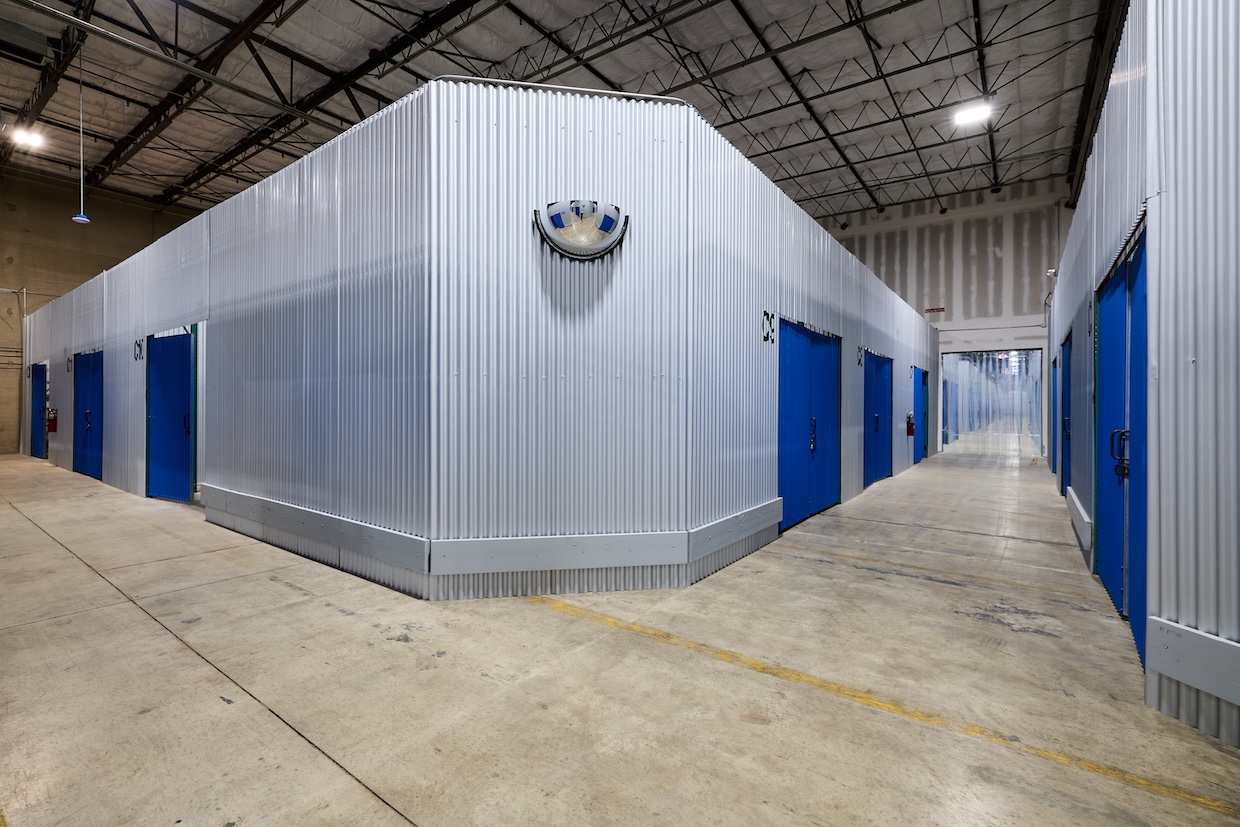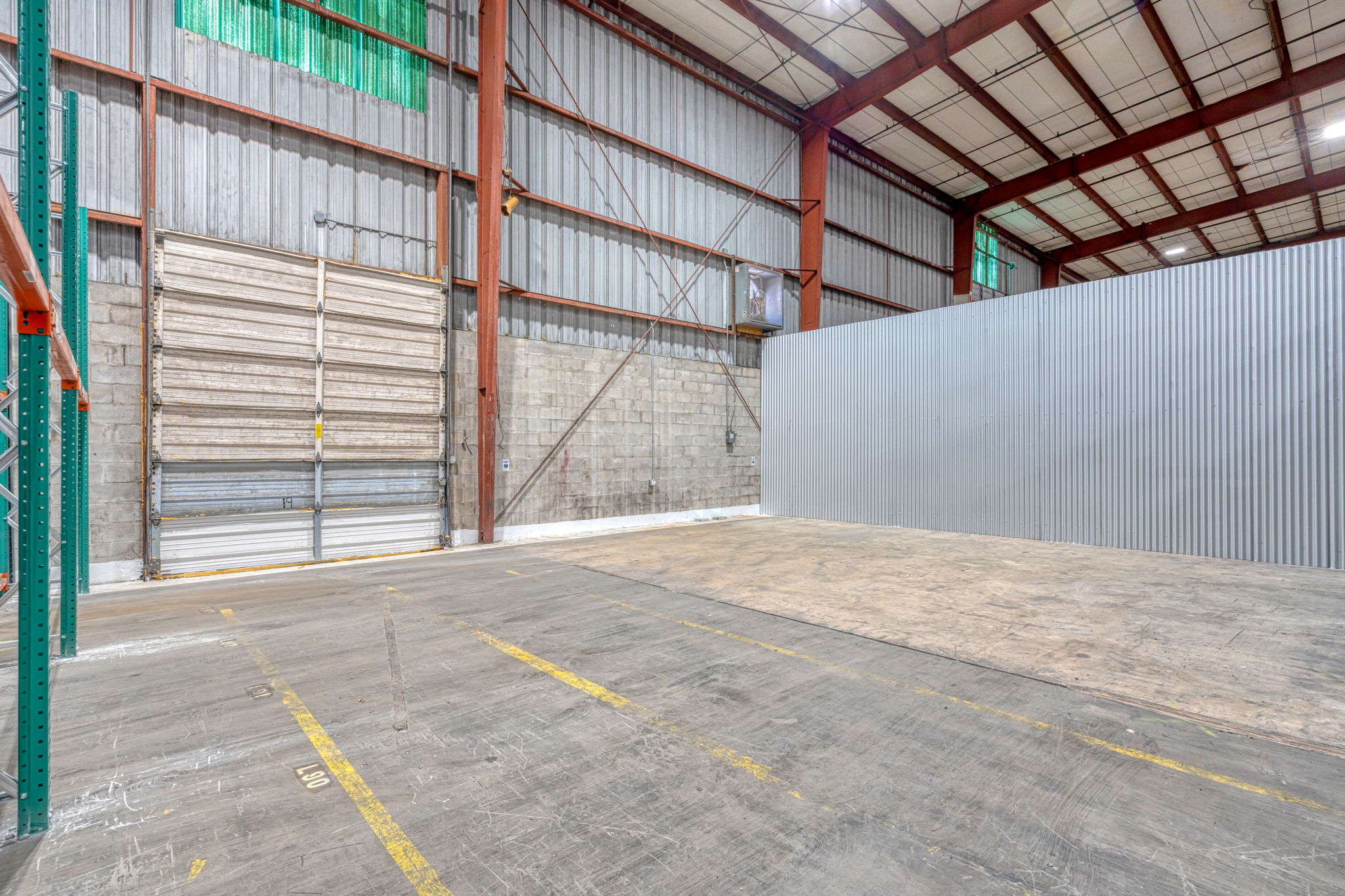From Flex to Manufacturing: Finding the Right Type of Industrial Space for Your Business
Selecting the right industrial space is one of the most crucial decisions a business can make. The perfect facility enhances operations, controls costs, and supports growth, while the wrong choice can create costly inefficiencies and limitations. This guide will help you understand the different types of industrial spaces and how to match them to your specific business needs.
Understanding Industrial Property Types
Flex Space
Key Characteristics:
- Higher office-to-warehouse ratio (typically 30-50% office)
- Lower clear heights (16-24 feet)
- More windows and natural light
- Better quality exterior finishes
- Typically smaller units (2,000-20,000 sq ft)
- Often in business parks with similar buildings
Ideal For:
- Research and development operations
- Light assembly with office components
- Showroom plus storage needs
- Service businesses with equipment storage
- Startups that need versatile space
Advantages:
- Flexibility to reconfigure as needs change
- More presentable for client visits
- Better working environment for staff
- Often located in accessible, higher-profile areas
- Typically better parking ratios
Limitations:
- Higher cost per square foot than pure warehouse
- Less efficient for large-scale storage
- Limited loading capabilities (fewer docks)
- Restrictions on manufacturing or heavy industrial uses
Warehouse/Distribution Space
Key Characteristics:
- High clear heights (28-36+ feet)
- Extensive loading docks and truck courts
- Minimal office space (5-15%)
- Large, open floorplans
- Typically larger units (20,000-1,000,000+ sq ft)
- Focus on logistics efficiency
Ideal For:
- Product storage and distribution
- E-commerce fulfillment
- Third-party logistics (3PL) providers
- Wholesale operations
- Import/export businesses
Advantages:
- Maximum cubic storage efficiency
- Optimized for loading/unloading operations
- Lower cost per square foot
- Designed for high-volume movement of goods
- Better clear heights for vertical storage
Limitations:
- Less appropriate for customer-facing operations
- Not designed for significant office functions
- Often located in industrial areas away from population centers
- Limited amenities for employees
Manufacturing Space
Key Characteristics:
- Reinforced floors for heavy equipment
- Enhanced power supply (often 480V, 3-phase)
- Higher clear heights in production areas (24-30+ feet)
- Specialized ventilation and utility systems
- Mix of production, warehouse, and office areas
- Loading capabilities for both raw materials and finished goods
Ideal For:
- Product manufacturing operations
- Food processing facilities
- Equipment or vehicle assembly
- Specialized production processes
- Fabrication and workshops
Advantages:
- Designed for production workflows
- Better power and utility infrastructure
- Appropriate zoning for manufacturing activities
- Often allows for customized layouts for specific processes
- Better floor load capacity for heavy equipment
Limitations:
- More specialized and potentially harder to find
- Less flexibility for changing business models
- Can be more expensive to outfit initially
- May have location restrictions due to zoning
Cold Storage/Refrigerated Space
Key Characteristics:
- Insulated walls, floors, and ceilings
- Refrigeration systems for temperature control
- Specialized loading docks with seals
- Temperature zones for different products
- Higher power requirements
- Vapor barriers and specialized floors
Ideal For:
- Food distribution
- Pharmaceutical storage
- Chemical storage with temperature requirements
- Perishable product handling
- Specialized inventory requiring climate control
Advantages:
- Purpose-built for temperature-sensitive operations
- Energy efficiency features for refrigeration
- Specialized handling capabilities
- Compliance with regulatory requirements
Limitations:
- Significantly higher cost (both lease and operation)
- Very specialized use with limited flexibility
- Expensive to convert to/from other uses
- Higher energy consumption
Data Center/Tech Space
Key Characteristics:
- Robust power and backup systems
- Advanced cooling infrastructure
- Enhanced security features
- Raised floors for cabling
- Redundant utility connections
- Higher ceiling heights for equipment
Ideal For:
- Server and computing infrastructure
- Data storage and processing
- Telecommunications equipment
- Technology testing and development
- Cryptocurrency mining
Advantages:
- Designed for high-density power usage
- Better security and environmental controls
- Redundant systems for reliability
- Specialized cooling for heat-generating equipment
Limitations:
- Highest cost per square foot of industrial spaces
- Extremely specialized use and infrastructure
- Significant power requirements and costs
- Limited conversion potential to other uses
Matching Space Type to Business Needs
Assess Your Current and Future Operations
Before selecting a space type, evaluate these aspects of your business:
Operational Workflow:
- How do materials and products flow through your business?
- What is the ratio of storage to processing/production?
- How much office space do you need relative to industrial space?
Growth Projections:
- How might your space needs change in 3-5 years?
- Will your production or storage requirements increase?
- Could your business model shift in ways that change space needs?
Equipment and Infrastructure:
- What specialized equipment will you use?
- What are your power, water, gas, and other utility requirements?
- Do you need specialized loading capabilities?
Workforce Considerations:
- How many employees will work on-site?
- What amenities are important for employee satisfaction?
- Do you need customer/client access to the facility?
Space Requirement Calculations
Use these formulas to estimate your space needs:
Warehouse/Storage:
- Pallet positions × square footage per pallet position
- (For standard racking in 30′ clear buildings, calculate ~13-15 sq ft per pallet)
Manufacturing:
- Equipment footprint + operating space + material staging + shipping/receiving
Office Component:
- Employees × 150-250 sq ft per employee (varies by function)
Common/Support Areas:
- 10-15% of total space for restrooms, break rooms, etc.
Growth Factor:
- Add 15-25% to accommodate 3-year growth projections
Decision Matrix: Selecting the Right Space Type
Step 1: Priority Ranking
Rank these factors in order of importance for your business:
- Cost efficiency
- Operational efficiency
- Location/accessibility
- Growth flexibility
- Image/customer impression
- Employee environment
- Specialized infrastructure
Step 2: Match Priorities to Space Types
| Priority Factor | Best Space Type |
|---|---|
| Cost efficiency | Standard warehouse |
| Operational efficiency | Purpose-built for your operation type |
| Location/accessibility | Flex space in business parks |
| Growth flexibility | Larger warehouse with phased build-out |
| Image/customer impression | Flex space or front office/rear warehouse |
| Employee environment | Flex space with higher office percentage |
| Specialized infrastructure | Purpose-built manufacturing or cold storage |
Step 3: Consider Hybrid Solutions
Many businesses benefit from hybrid approaches:
- Front office/rear warehouse configurations
- Flex space with high-bay storage sections
- Manufacturing with attached distribution space
- Co-located but separate office and industrial facilities
Location Considerations by Space Type
Flex Space
- Best locations: Business parks, mixed-use areas, suburban office/industrial zones
- Access priorities: Employee commuting, client visits, amenity proximity
- Zoning needs: Business park, light industrial, or commercial
Warehouse/Distribution
- Best locations: Near transportation corridors, industrial parks, port/rail adjacent
- Access priorities: Highway access, truck routes, labor pools
- Zoning needs: Industrial, warehouse, or distribution
Manufacturing
- Best locations: Industrial parks, manufacturing zones, areas with fewer residential neighbors
- Access priorities: Supplier/customer proximity, utility infrastructure, workforce access
- Zoning needs: Manufacturing, heavy commercial, or industrial
Cold Storage
- Best locations: Food distribution hubs, near agricultural areas or ports, industrial zones
- Access priorities: Supply chain connection points, energy infrastructure
- Zoning needs: Industrial with specific allowances for refrigeration equipment
Lease vs. Buy Considerations
When Leasing Makes More Sense
- Businesses with changing space needs
- Operations requiring specialized facilities
- Areas with high property values
- Companies preserving capital for operations
- Situations requiring flexibility
When Buying Makes More Sense
- Stable, established businesses
- Specialized build-outs that would be costly to relocate
- Situations where property control is strategic
- Markets with favorable purchase economics
- Long-term location commitment
Cost Comparison by Industrial Space Type
Note: These are national averages as of late 2024. Local markets vary significantly.
Lease Rate Comparisons
- Flex Space: $10-20 per sq ft (NNN)
- Warehouse/Distribution: $6-14 per sq ft (NNN)
- Manufacturing: $7-16 per sq ft (NNN)
- Cold Storage: $14-30 per sq ft (NNN)
- Data Center/Tech: $18-40+ per sq ft (NNN)
Total Occupancy Costs
Remember to factor these additional expenses:
- NNN charges (taxes, insurance, maintenance): $2-6 per sq ft
- Utilities: Varies dramatically by use (data centers and cold storage highest)
- Interior maintenance: $0.50-2.00 per sq ft
- Tenant improvements: Amortized cost of build-out
- Moving and setup costs: One-time but significant
Case Studies: Matching Business to Space Type
E-Commerce Startup
Business needs:
- Rapid order fulfillment
- Inventory storage for diverse products
- Marketing and customer service office functions
- Expectation of 200% growth in 3 years
Best solution:
Flex warehouse with 70% warehouse (24’+ clear) and 30% office space, with emphasis on loading capabilities and expansion options.
Light Manufacturing Company
Business needs:
- Production floor for assembly
- Raw material and finished goods storage
- Quality control testing areas
- Customer demonstration space
Best solution:
Manufacturing space with dedicated production zones, 20% office component, and enhanced power capacity with multiple loading positions.
Professional Service with Equipment
Business needs:
- Office space for administrative functions
- Secure storage for valuable equipment
- Occasional client meetings
- Small workspace for equipment preparation
Best solution:
Flexible space in business parks with climate control, enhanced security, and professional appearance with good parking.
Conversion Potential Between Space Types
Flex to Warehouse
- Feasibility: Moderate
- Common changes: Office reduction, loading dock additions
- Challenges: Often limited clear height cannot be easily increased
Warehouse to Flex
- Feasibility: High
- Common changes: Office build-out, façade improvements, parking additions
- Challenges: Creating appropriate office environment in industrial shell
General Industrial to Manufacturing
- Feasibility: Moderate to High
- Common changes: Power upgrades, floor reinforcement, specialized ventilation
- Challenges: Zoning restrictions, utility capacity limitations
Standard to Cold Storage
- Feasibility: Low to Moderate
- Common changes: Insulation, refrigeration systems, specialized doors
- Challenges: Expensive conversion, energy requirements, floor modifications
Negotiation Tips for Each Space Type
Flex Space
- Negotiate TI allowances for office customization
- Focus on parking ratio adequacy
- Address shared space maintenance standards
- Clarify signage and exterior modification rights
Warehouse/Distribution
- Emphasize loading position ratio needs
- Negotiate yard and trailer storage rights
- Focus on clear height guarantees
- Address after-hours operation rights
Manufacturing
- Secure necessary power and utility commitments
- Negotiate specialized venting and discharge rights
- Clarify noise and hours of operation allowances
- Address floor load capacity guarantees
Cold Storage
- Focus on utility responsibility and capacity
- Clarify refrigeration equipment ownership/maintenance
- Address condensation management responsibility
- Negotiate specialized loading area maintenance
Conclusion: Making Your Final Decision
Finding the right industrial space type requires balancing current operational needs, future growth plans, financial considerations, and location requirements. The best approach is methodical:
- Define your operational requirements in detail before beginning your search
- Prioritize your must-have features versus nice-to-have elements
- Consider total occupancy cost rather than just the base lease rate
- Evaluate future flexibility for both growth and business model evolution
- Visit multiple property types to understand the practical differences
- Consult with operations staff who will work in the space daily
- Work with industrial specialists who understand your business type
Remember that the right industrial space does more than house your business—it enables operational efficiency, supports growth, controls costs, and can provide competitive advantages. Matching your specific needs to the appropriate space type will pay dividends throughout your occupancy.


